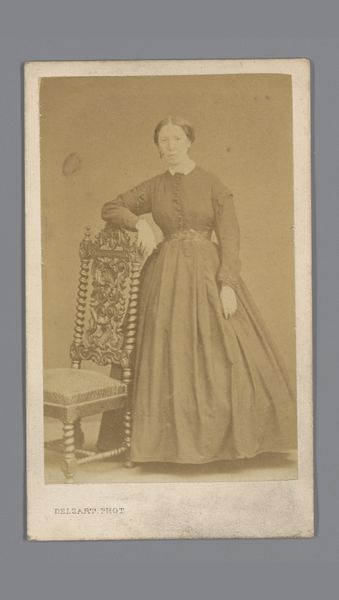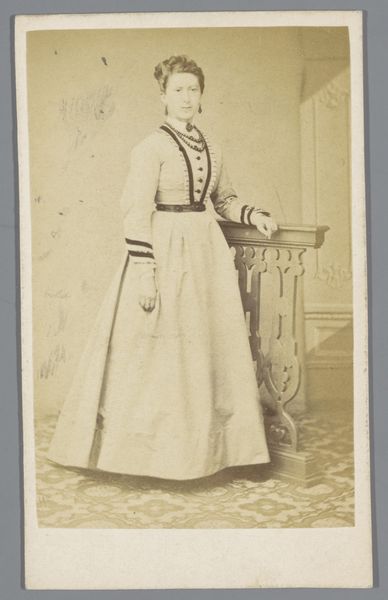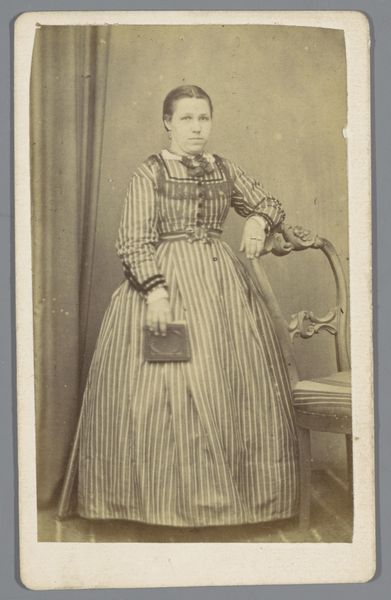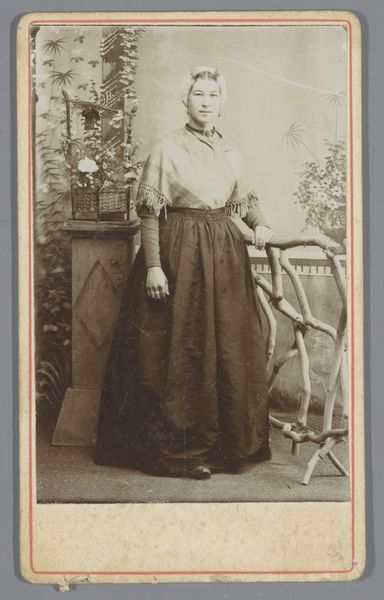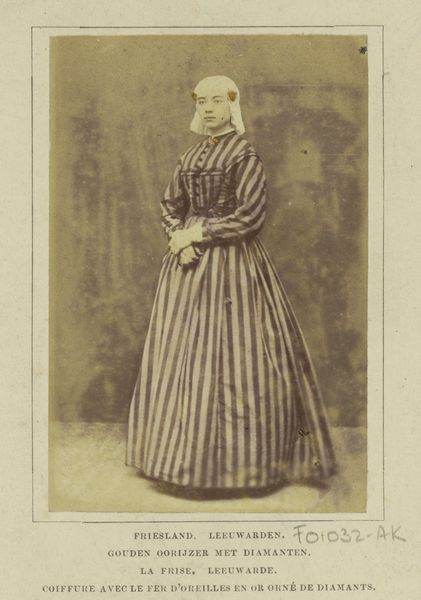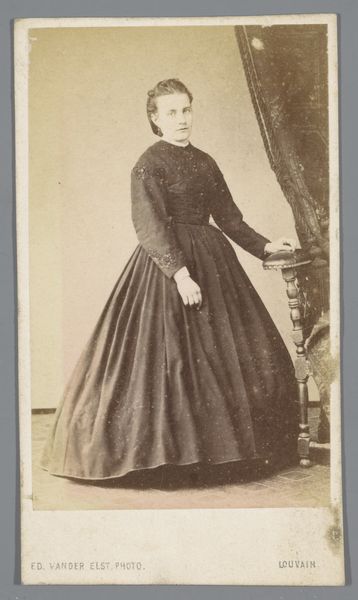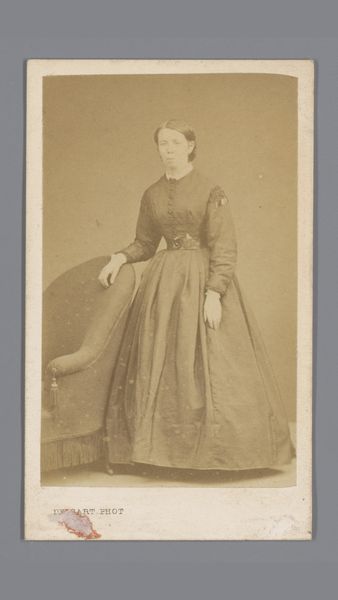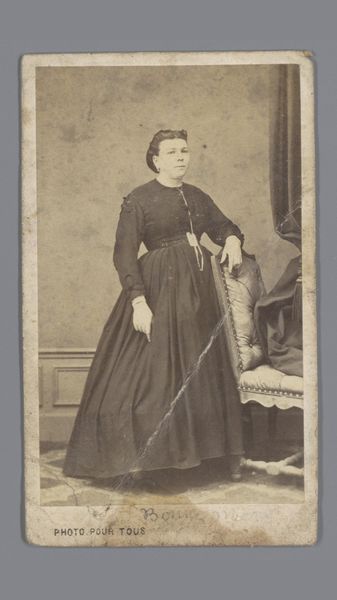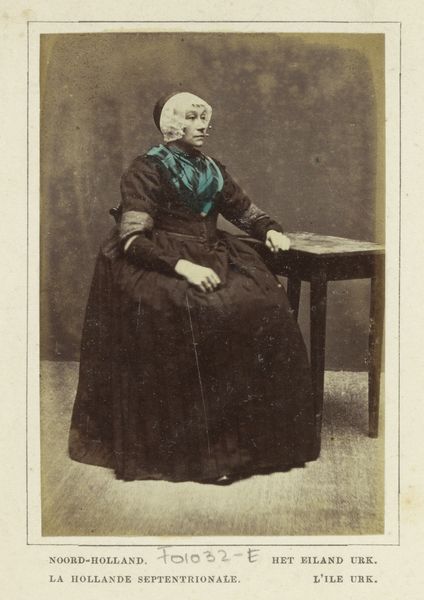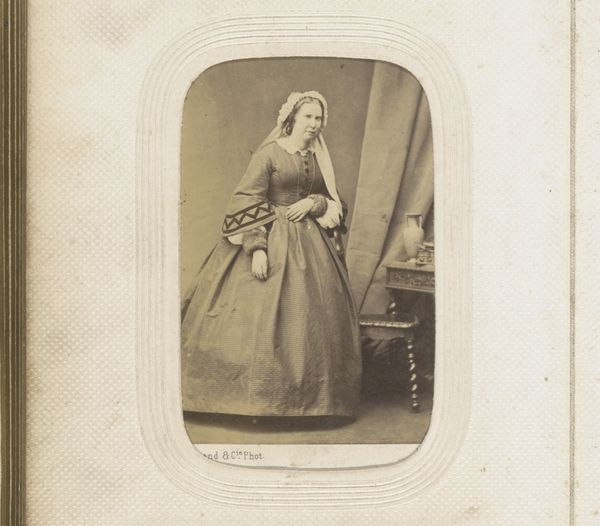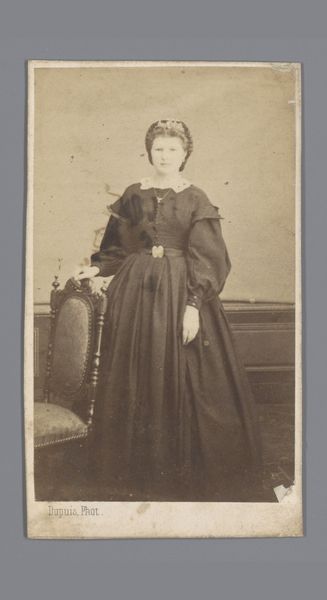
Portret van een onbekende vrouw in klederdracht van Nijkerk, Gelderland 1860 - 1890
0:00
0:00
photography, gelatin-silver-print
#
portrait
#
photography
#
historical photography
#
gelatin-silver-print
#
realism
Dimensions: height 86 mm, width 60 mm
Copyright: Rijks Museum: Open Domain
Curator: Here we have Andries Jager’s “Portret van een onbekende vrouw in klederdracht van Nijkerk, Gelderland,” a gelatin-silver print, dating from around 1860 to 1890. It is currently held in the collection of the Rijksmuseum. Editor: My initial impression is one of somber dignity. The muted tones, the woman’s reserved expression, even the placement of her hand on that simple chair—everything seems to communicate a quiet resilience. Curator: Indeed. It's crucial to consider this image within the framework of 19th-century societal expectations and gender roles. The traditional clothing signals a particular regional identity and perhaps even a specific religious affiliation within the Gelderland province. The photographic process itself was still relatively new, offering avenues for self-representation for a broader section of the population, while simultaneously imposing certain restrictions. Editor: Restrictions such as? Curator: The rather rigid pose, for example, common in early photography, might reflect constraints in technology that demanded the subject be still for a long exposure. However, I'd also argue that it can represent a more pervasive social constraint for women of this era, especially the emphasis on modesty. Also consider the gaze. What does her slightly averted eyes signify about the relationship of the woman and photographer? Editor: I agree. The chair serves an interesting purpose, it stabilizes the frame visually. Beyond its utilitarian function, in many portraits of the era it often signals about stability and authority in the subject's life. Who are they, what do they hold dear? Curator: That's right! While we may not know her name or individual story, her clothing becomes a potent symbol of cultural belonging. Think about what wearing the traditional "klederdracht" means today. Editor: This raises broader questions about how we interpret historical images and the role clothing plays in communicating identity. The deliberate preservation of such garments, now archived in museum collections or seen during traditional festivities, points to the continuous renegotiation between history, memory, and belonging. This gelatin print offers insight not just into the individual, but also into cultural identity. Curator: Yes, and that interplay between the personal and the social, the past and the present, makes this photograph such a rich text to study, don’t you think? Editor: Absolutely, it gives much to consider.
Comments
No comments
Be the first to comment and join the conversation on the ultimate creative platform.

